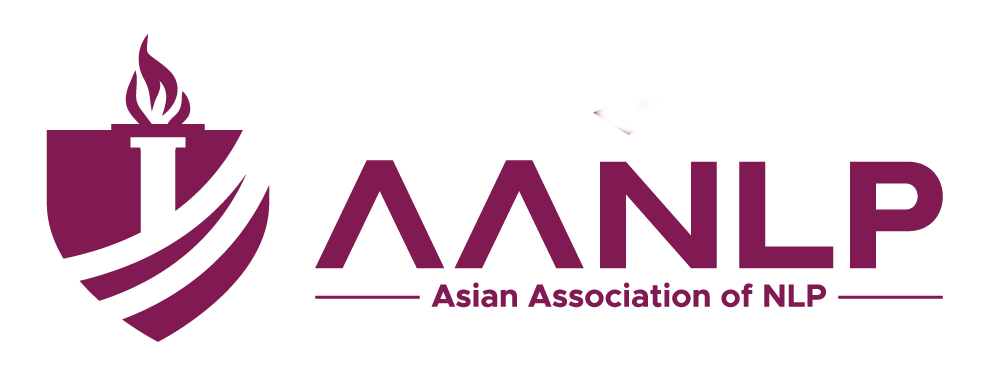How NLP helps in building Focus

(Banner image Designed by Freepik)
Neuro-Linguistic Programming (NLP) is a branch of psychology and neuroscience which helps you program your brain to achieve any outcome in your life. NLP can be a valuable tool for building and enhancing focus. NLP is a psychological approach that involves understanding how people organize their thoughts, emotions, and language to achieve specific outcomes. By using NLP techniques, individuals can reprogram their minds to maintain better concentration, minimize distractions, and achieve their goals.
Here are several ways in which NLP can help in building focus:
- Anchoring Positive States
- What it is: Anchoring is an NLP technique that associates a specific physical or mental trigger with a desired emotional or cognitive state. In this case, the desired state is focused attention.
- How it helps: You can create an anchor for focus by recalling a time when you were deeply focused and productive. While in that state, you can use a specific gesture, word, or image. Repeating this process creates a mental shortcut, so when you trigger the anchor in the future, your brain automatically switches to a focused state.
- Example: If you feel distracted, you could press your thumb and forefinger together (the anchor) to bring back the focused state. Mind you, this should have been done at the time when you were totally focused to anchor the state.
- Reframing Negative Thoughts
- What it is: Reframing is the process of changing the way you perceive a situation to make it more positive or productive.
- How it helps: Many distractions or lack of focus are the result of negative self-talk or limiting beliefs (e.g., “I can’t concentrate” or “This is too hard”). NLP techniques help you recognize these patterns and reframe them into more constructive thoughts, such as “I am capable of focusing on this task.”
- Example: Instead of thinking “This project is overwhelming,” you could reframe the thought to “This project is an opportunity to improve my skills step by step.”
- Visualization and Mental Rehearsal
- What it is: Visualization involves creating a detailed mental image of a desired outcome. In NLP, mental rehearsal helps you imagine the process and the feeling of being focused and accomplishing your tasks.
- How it helps: By visualizing yourself in a focused state, successfully completing tasks, and eliminating distractions, you program your mind to achieve that state in reality. This can be especially helpful before starting a complex or high-stakes task.
- Example: Before beginning a task, you could visualize yourself sitting at your desk, fully concentrated, and seeing the task through to completion.
- Swish Technique
- What it is: The Swish Technique is used in NLP to replace an unwanted behavior or state (like distraction) with a more desirable one (like focus).
- How it helps: When you notice yourself becoming distracted, the Swish Technique allows you to quickly “swish” the mental image of distraction into an image of yourself fully focused and productive. This helps break the pattern of distraction and reinforce focus.
- Example: Visualize yourself being distracted and then mentally replace that image with one of you being highly focused. You can repeat this several times until the image of focus dominates.
- Chunking Down Goals
- What it is: Chunking is an NLP technique used to break down complex or large tasks into smaller, more manageable parts.
- How it helps: Often, a lack of focus stems from feeling overwhelmed by the size of a task. By “chunking down” large tasks into smaller, more manageable pieces, you can concentrate on each part individually, making it easier to stay focused and avoid procrastination.
- Example: Instead of focusing on writing an entire report, you could break it down into smaller tasks, such as researching, outlining, and then writing one section at a time.
- Eliminating Distractions Through Sensory Awareness
- What it is: NLP emphasizes heightened awareness of your sensory experiences (visual, auditory, kinesthetic) to help improve focus.
- How it helps: By becoming more conscious of the sensory input that distracts you (e.g., sounds, visual clutter, or bodily discomfort), you can take steps to manage or reduce those distractions. Sensory awareness helps you create an environment that supports better concentration.
- Example: If auditory distractions affect your focus, you could practice consciously reducing them by using noise-canceling headphones or working in a quieter space.
- Goal Setting with Well-Formed Outcomes
- What it is: NLP teaches the concept of well-formed outcomes, which are specific, measurable, achievable, relevant, and time-bound goals (similar to SMART goals).
- How it helps: Setting clear and well-formed outcomes gives your brain a precise focus point. When you know exactly what you want to achieve, it’s easier to concentrate your energy on the tasks that lead to that outcome. The focus on clear goals helps reduce mental clutter and distractions.
- Example: Instead of saying, “I want to work more effectively,” set a specific goal like, “I will finish writing the first draft of my report by 3 PM today.”
- Pattern Interrupts for Breaking Distraction Cycles
- What it is: Pattern interrupts are techniques used to break habitual behaviors and thought patterns. In NLP, this is done by introducing an unexpected action or thought that disrupts an unwanted behavior (like losing focus).
- How it helps: When you notice yourself slipping into distraction, you can use a pattern interrupt to stop the cycle and bring yourself back to the task. This might involve a quick physical movement, a verbal cue, or a mental image that “interrupts” the distraction.
- Example: If you catch yourself daydreaming, you can use a quick stretch, a deep breath, or even clap your hands as a pattern interrupt to reset your focus.
- Meta-Modeling for Identifying Limiting Beliefs
- What it is: The Meta-Model in NLP is a questioning technique that helps you uncover and challenge limiting beliefs or vague thinking that may be undermining your focus.
- How it helps: Many times, lack of focus is tied to beliefs like “I’m not good at this” or “I’ll never get this done.” The Meta-Model helps you break down these beliefs and replace them with more empowering thoughts, improving your ability to focus on the task at hand.
- Example: If you believe “I always get distracted,” you can challenge this belief by asking yourself, “When did I successfully focus in the past?” This helps shift your mindset to one that is more conducive to focus.
- Rapport with Yourself
- What it is: In NLP, rapport is typically used to build trust and connection with others. However, it can also be applied internally to establish rapport with yourself.
- How it helps: Building internal rapport helps align your conscious and subconscious mind, reducing internal conflicts that can cause distractions. When you are in harmony with your own thoughts and goals, it’s easier to stay focused and on track.
- Example: Practicing positive self-talk and self-compassion can help you maintain focus and avoid the negative inner dialogue that often leads to distractions.
NLP offers various tools and techniques to help individuals build and maintain focus by managing distractions, reframing limiting beliefs, setting clear goals, and creating positive mental states. Through techniques like anchoring, visualization, and pattern interrupts, you can train your mind to stay focused on the task at hand, improve productivity, and enhance overall performance. By consistently practicing these techniques, you can develop a stronger ability to focus in both personal and professional contexts.




